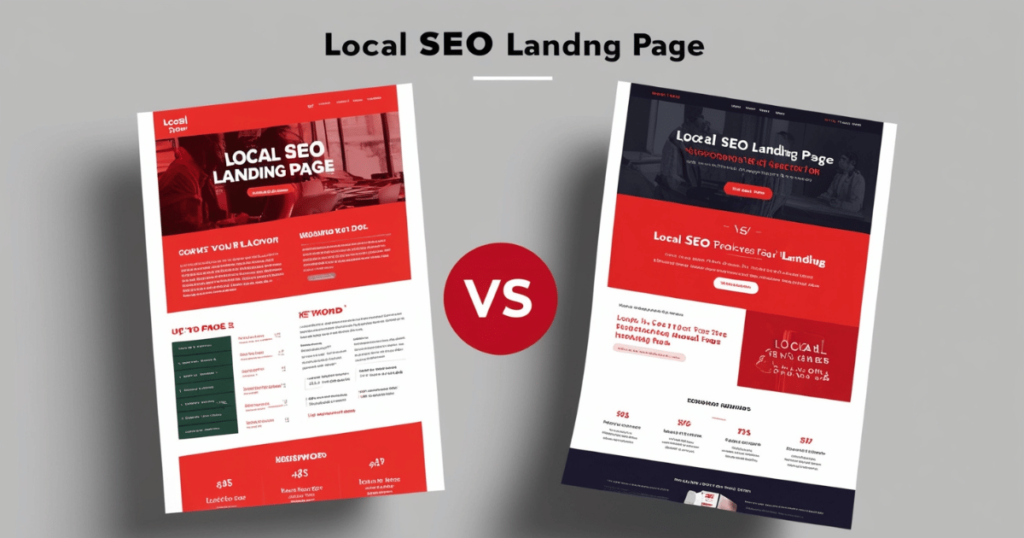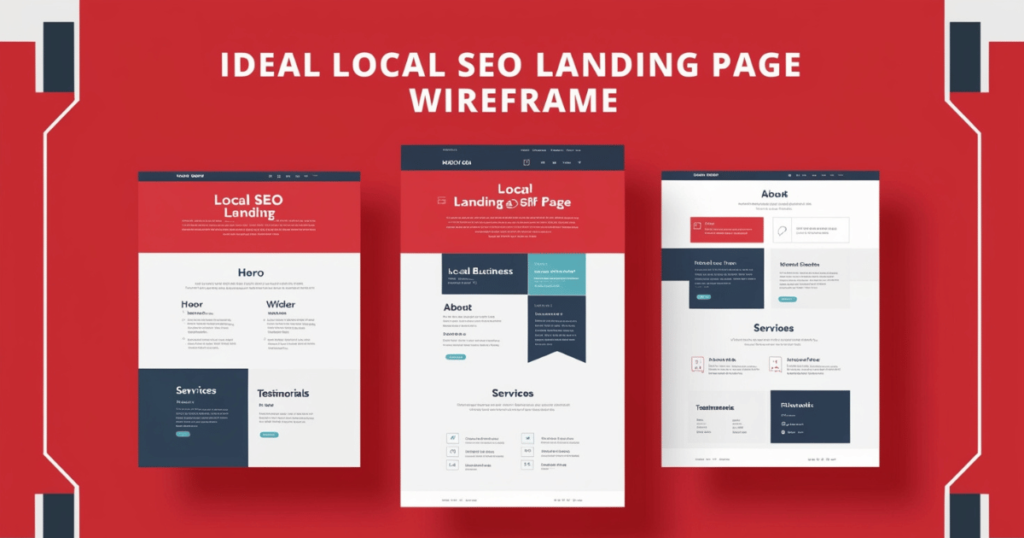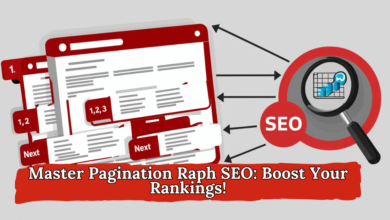
Local SEO Landing Page: Local SEO landing pages are crucial for businesses aiming to attract location-based traffic. With the increasing competition in search engine results, having an optimized and well-designed local SEO landing page can make all the difference in gaining visibility and driving conversions. In this comprehensive guide, we will provide you with the best local SEO landing page examples and strategies to create your own high-performing landing pages that rank on Google’s first page.
What Is a Local SEO Landing Page?
A local SEO landing page is a dedicated webpage tailored to target a specific geographic area. It is designed to rank for local search queries, helping businesses capture search traffic from users looking for services or products in their area. A well-crafted local SEO landing page focuses on local keywords, showcases location-specific content, and provides a seamless user experience.
Why Do Local SEO Landing Pages Matter?
Local SEO landing pages are pivotal for attracting local customers and increasing sales. Here’s why they are vital:
- Improved Search Visibility: Targeting local search queries increases your chances of appearing in search engine results for users in specific regions.
- Higher Conversion Rates: Location-specific content resonates better with local users, leading to higher engagement and conversions.
- Enhanced User Experience: A tailored local landing page provides relevant and focused information, making it easier for users to find what they need quickly.
Key Elements of High-Performing Local SEO Landing Pages
To create a successful local SEO landing page, consider incorporating these critical components:
- Targeted Local Keywords: Use local keywords, such as “plumber in Chicago” or “best coffee shop in New York,” to attract users searching for specific services in your area.
- Location-Specific Content: Tailor your content to reflect the local audience’s needs and interests. Highlight local landmarks, events, or community information relevant to your business.
- Consistent NAP Information: Ensure that your Name, Address, and Phone number (NAP) are consistent across your website and other online listings.
- Customer Reviews: Showcase local customer reviews to build trust and authority. Positive reviews can also boost your search rankings.
- Optimized Meta Tags: Include local keywords in your meta title and description to improve click-through rates (CTR).
- Internal Linking: Link to related pages on your website, such as your services page or blog posts about local events.
Best Local SEO Landing Page Examples
Below, we provide several local SEO landing page examples that illustrate the best practices for creating an effective landing page.

1. Example from a Local Restaurant
A restaurant in Los Angeles created a local SEO landing page titled “Best Tacos in Los Angeles.” This page included:
- Detailed Descriptions of Menu Items: Highlighting popular dishes with local ingredients.
- Local Keywords: Using terms like “authentic tacos in Los Angeles” throughout the content.
- High-Quality Local Images: Featuring photos of the dishes and the restaurant’s ambiance.
2. Example from a Real Estate Agency
A real estate agency developed a landing page focused on “Homes for Sale in Miami.” Key features included:
- Local Market Data: Providing statistics about the Miami housing market.
- Interactive Map: Showing property listings in different neighborhoods.
- Call-to-Action (CTA): Encouraging users to “Schedule a Viewing Today.”
3. Example from a Law Firm
A law firm created a local landing page for “Personal Injury Lawyer in Dallas.” This page successfully ranked due to:
- Local Client Testimonials: Sharing feedback from Dallas clients.
- NAP Information: Displaying consistent and easily accessible contact details.
- Schema Markup: Utilizing local business schema for better search visibility.
How to Create an Effective Local SEO Landing Page

1. Conduct In-Depth Local Keyword Research
The first step in creating a successful local SEO landing page is identifying the right keywords. Use tools like Google Keyword Planner, Ahrefs, and Moz to find local search terms related to your business.
- Focus on long-tail keywords like “affordable dentist in Boston” or “24-hour locksmith in San Francisco.”
- Include geo-specific phrases in your headers, meta tags, and throughout your content.
2. Write High-Quality, Localized Content
Content should cater to the local audience’s preferences and needs:
- Mention local landmarks, community events, and popular destinations to connect with the local audience.
- Use local terms and phrases familiar to the target audience.
- Provide detailed descriptions of your services, including pricing, availability, and any local offers.
3. Optimize On-Page SEO Elements
To enhance the visibility of your local landing page, implement these on-page SEO techniques:
- Title Tag: Include the primary keyword and location, such as “Top-Rated HVAC Services in Seattle.”
- Meta Description: Write a concise meta description that includes your primary keyword and encourages clicks.
- Image Alt Text: Optimize images with descriptive alt text that includes local keywords.
4. Utilize Local Business Schema
Implementing local business schema markup helps search engines understand your business better and improves local search rankings. Ensure your schema includes information such as your business name, address, phone number, and URL.
5. Enhance User Experience (UX)
Creating a seamless user experience on your landing page is crucial for retaining visitors and improving engagement:
- Mobile Optimization: Ensure your page loads quickly and looks good on all devices.
- Clear CTAs: Use action-oriented phrases like “Book an Appointment Now” or “Call for a Free Quote.”
- Local Imagery: Incorporate photos of your location, staff, or customers to give a personal touch.
Common Mistakes to Avoid in Local SEO Landing Pages
- Overstuffing Keywords: Keyword stuffing can lead to penalties. Use local keywords naturally.
- Ignoring Mobile Users: A significant portion of local searches come from mobile devices. Failing to optimize for mobile can hurt your rankings.
- Duplicate Content: Each local landing page should have unique, tailored content to avoid being flagged as duplicate content.
FAQ Answers
1. What are local SEO landing pages, and why are they important?
Local SEO landing pages are web pages designed to target specific geographic areas. They are optimized with local keywords and location-specific content to attract users searching for services or products in their vicinity. These pages are important because they improve local search visibility, drive targeted traffic, and boost conversions by catering directly to a local audience’s needs.
2. How do I find the right keywords for my local SEO landing page?
To find the right keywords, start with tools like Google Keyword Planner, Ahrefs, and Moz. Look for geo-specific long-tail keywords related to your business (e.g., “emergency plumber in Chicago” or “best pizza in New York”). Analyze your competitors’ local landing pages and utilize Google’s “People Also Ask” feature for additional keyword ideas. Aim to include a mix of local service keywords and location modifiers.
3. What are some best practices for creating local landing pages?
The best practices for local landing pages include:
- Using targeted local keywords throughout the page.
- Creating unique, high-quality content tailored to the local audience.
- Ensuring consistent Name, Address, and Phone (NAP) information.
- Incorporating customer reviews and testimonials.
- Using local business schema markup for better search visibility.
- Adding clear calls-to-action (CTAs) and optimizing the page for mobile devices.
4. Why is it essential to use local business schema markup?
Local business schema markup is a structured data format that helps search engines understand your business’s details, such as its name, address, phone number, and website. Using local schema improves your chances of appearing in rich search results, like the local pack and featured snippets. It boosts your local SEO efforts by making your business information clearer and more accessible to search engines and users.
5. How can I ensure my local SEO landing page is mobile-friendly?
To ensure your local SEO landing page is mobile-friendly:
- Use a responsive design that adapts to different screen sizes.
- Optimize images and videos for faster loading times.
- Use large, easy-to-click buttons for calls-to-action (CTAs).
- Test your page using Google’s Mobile-Friendly Test tool.
- Keep content concise and easy to read on smaller screens.



